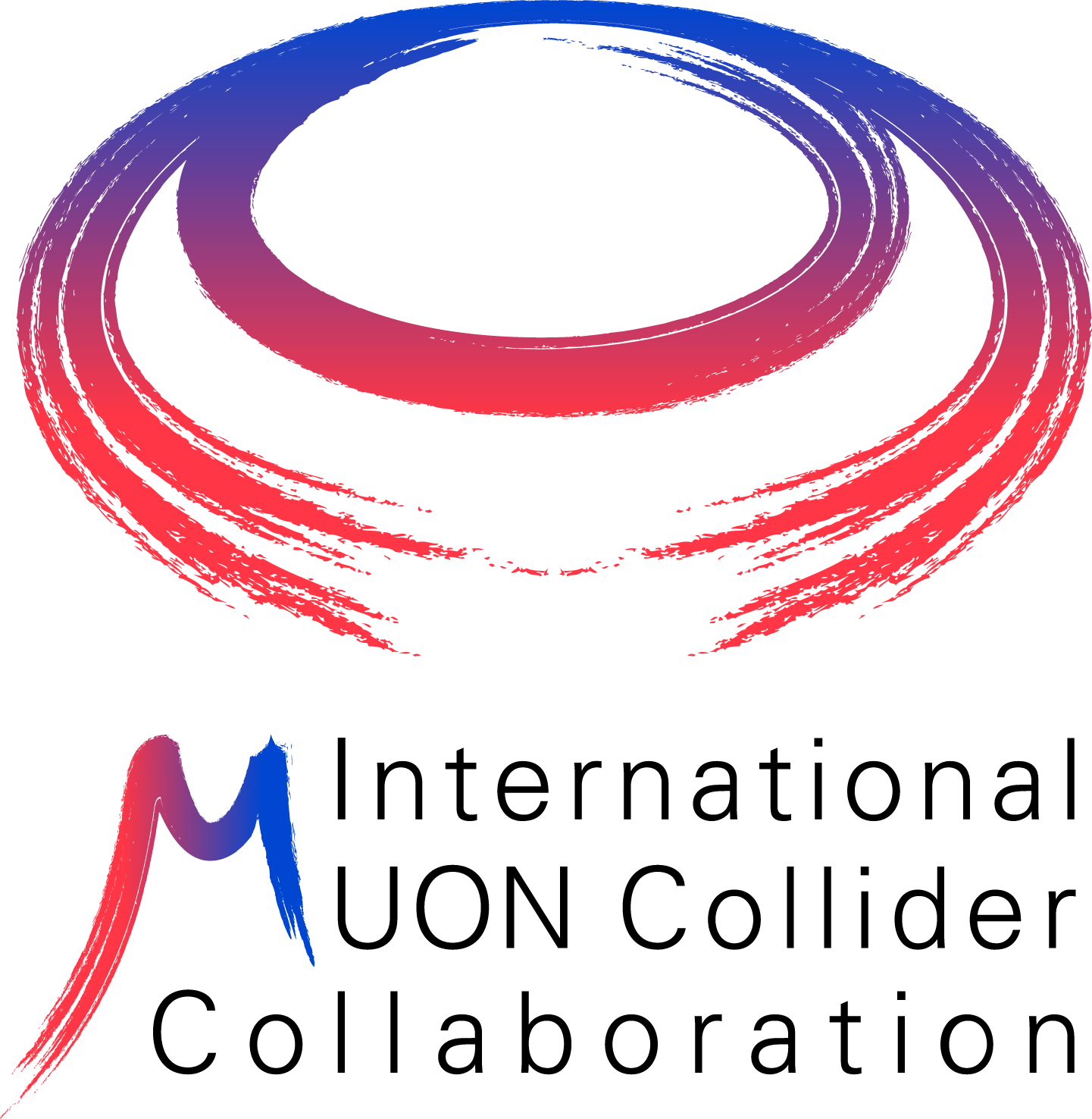=> SEE: general parameters along the muon collider chain and Beam Dynamics meetings
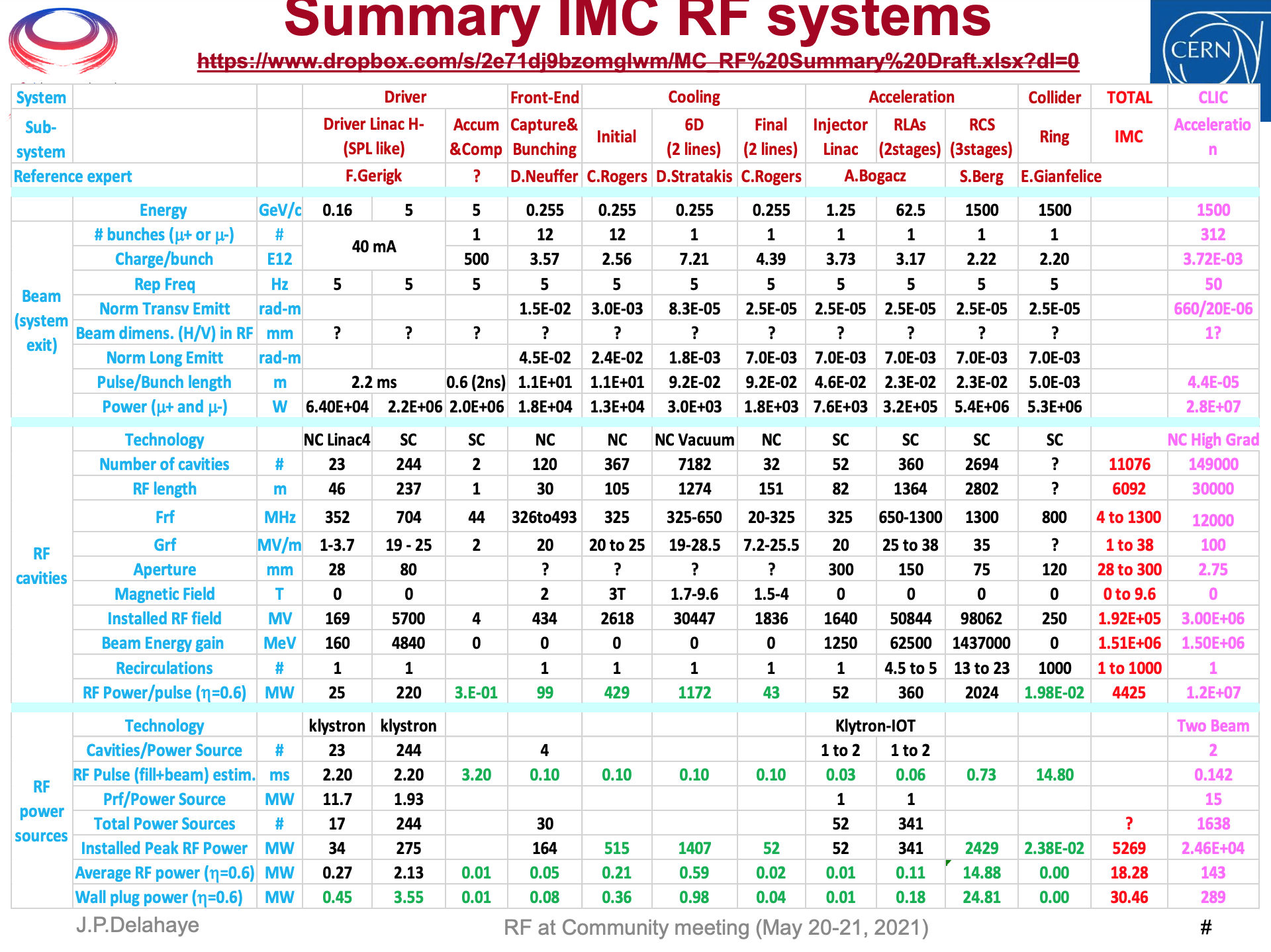
1) PROTON DRIVER
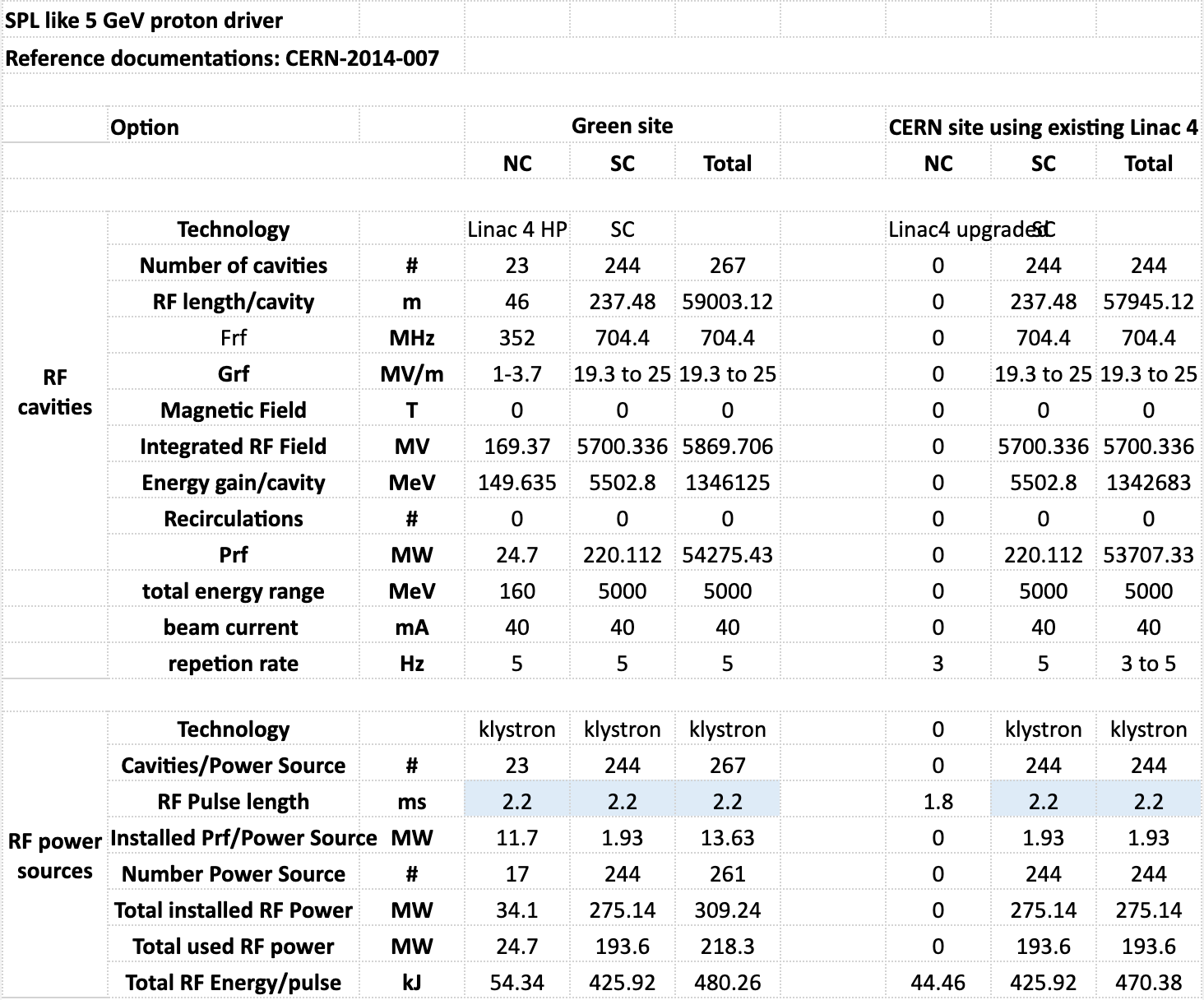
2) FRONT END

3) COOLING
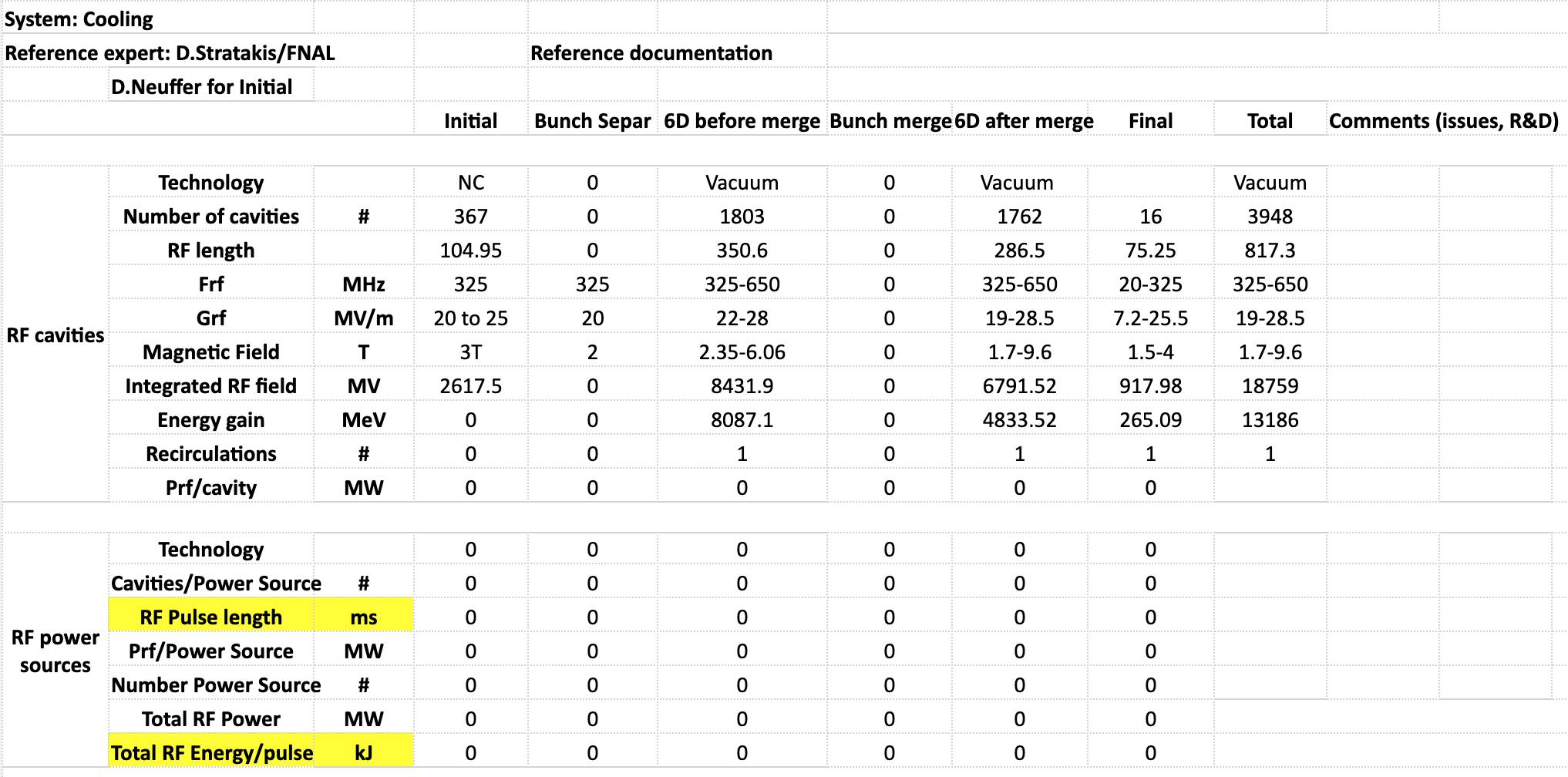
=> Beam momentum is ~ 0.2 GeV/c for Rectilinear and ~ 0.07 GeV/c for Final cooling (and ~ 0.05 GeV/c at the end).
- Single Particle description of Ionization Cooling by G. Franchetti (2000).
- Linear beam optics in solenoidal channels by G. Franchetti (2001).
- "Influence of space-charge fields on the cooling process of muon beams" by D. Stratakis, R.B. Palmer and D.P. Grote (PRAB2015) => It was found there that the deterioration of the cooling performance is primarily caused by the longitudinal space-charge force, setting a limit to the longitudinal emittance at ~ 1 mm.
- Space code for beam-plasma interaction by R. Samulyak (IPAC2015).
- Status with Bernd Michael Stechauner as of 04/04/22: At the entrance of the final cooling stage, we begin with a beam kinetic energy of ~ 100MeV. That means, that the beam has to be accelerated between 6D-cooling and final cooling stage (from 50 to 175 MeV/c). Final cooling: several cells, where the beam will be cooled down and reaccelerated. In the last cell of the final cooling structure, we assume a final beam kinetic energy of ~ 5-10 MeV.
4) ACCELERATION
- List of parameters from Fabian Batsch et al. (1st meeting on HEMAC discussions, 22/02/22):
1) Case 10 T (maximum field in hybrid RCS): Table 1/2 and Table 2/2.
2) Case 16 T (maximum field in hybrid RCS): Table 1/2 and Table 2/2.
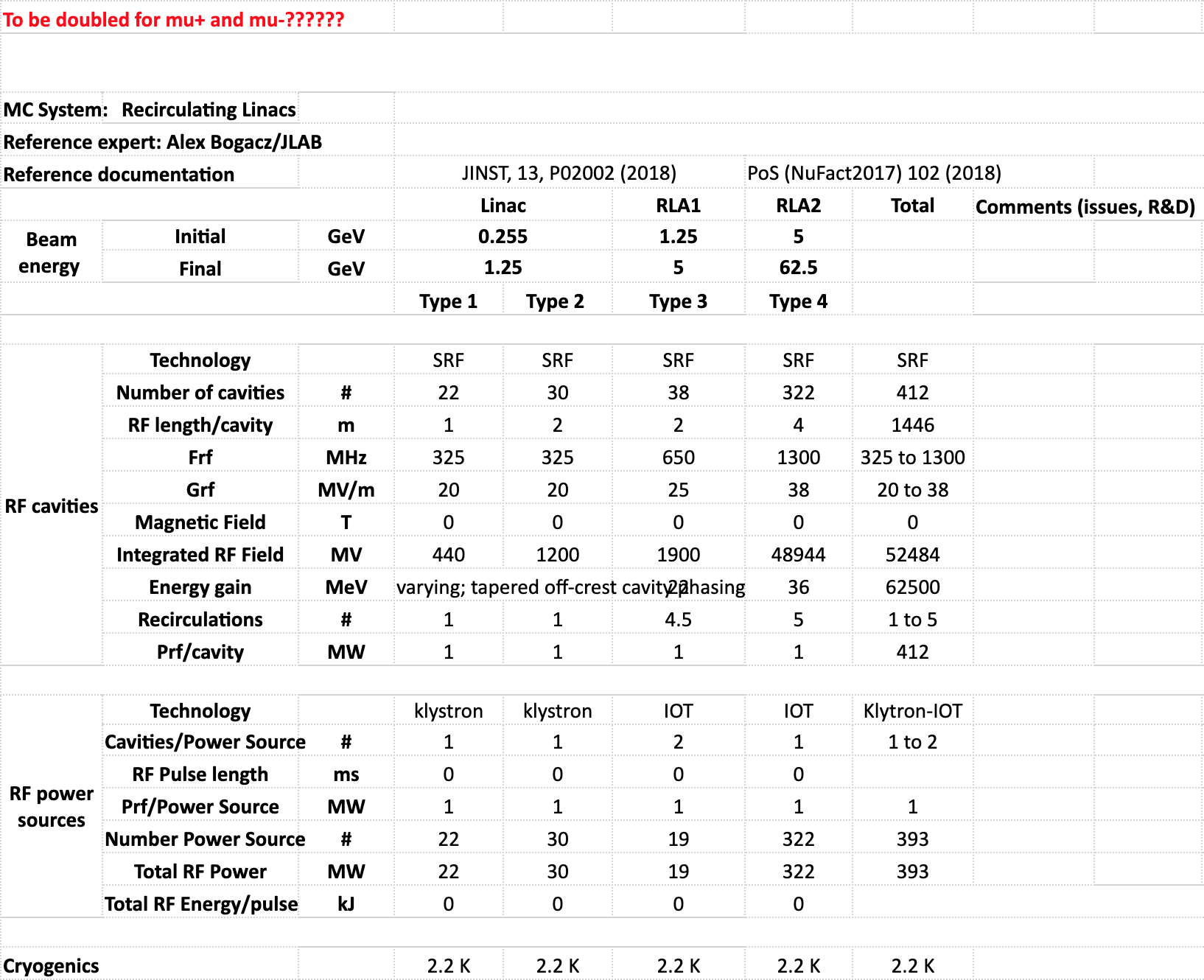
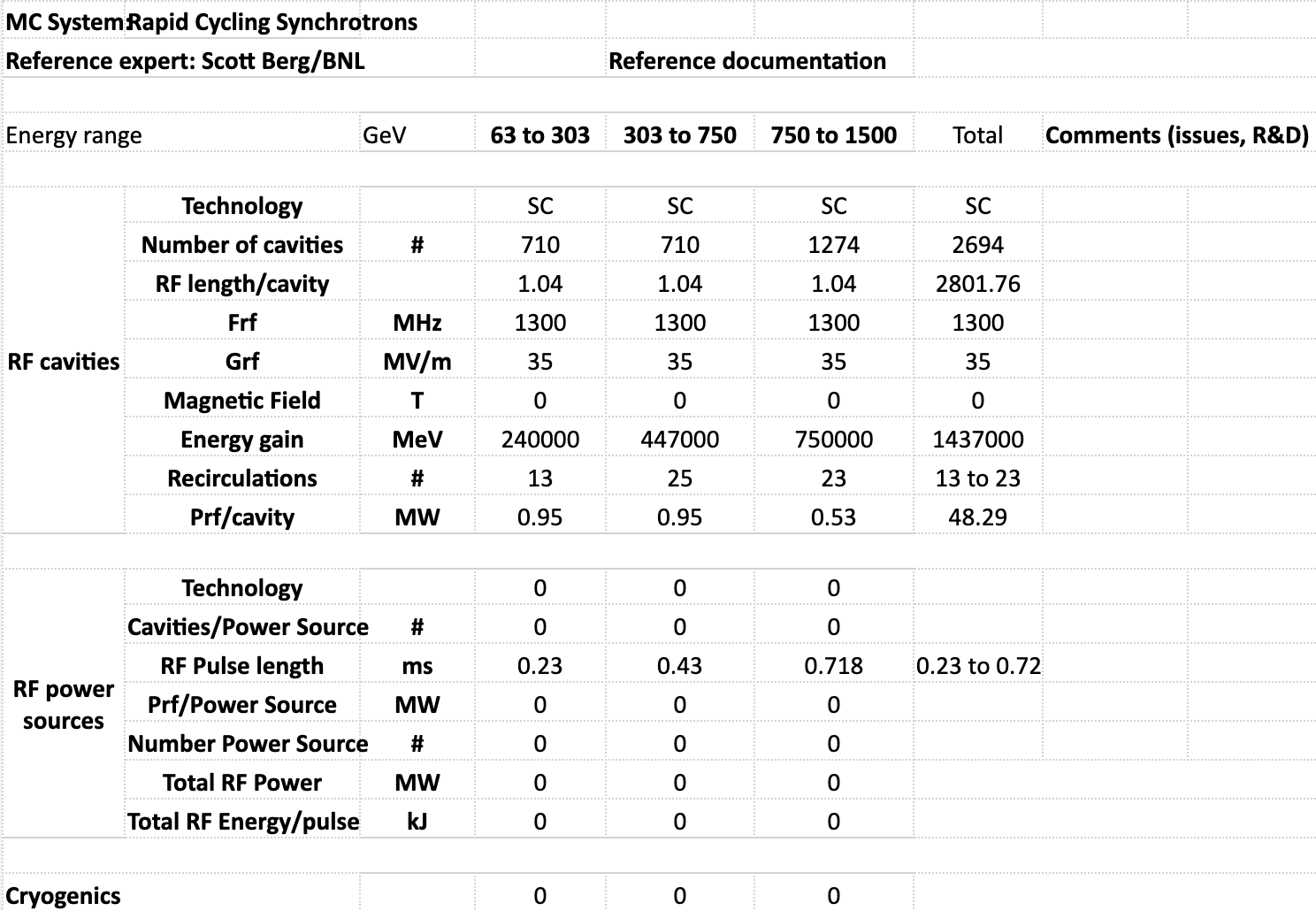
- "Muon Acceleration: Neutrino Factory and Beyond" by S. Alex Bogacz (PoS, 2017).
=> We have something like this for the acceleration scheme:
- Linac from ~ 0.2 GeV/c to ~ 1.5 GeV.
- RLinac from ~ 1.5 GeV to ~ 5 GeV.
- RLinac from ~ 5 GeV to 63 GeV.
- RCS from 63 GeV to ~ 300 GeV.
- RCS from ~ 300 GeV to 1.5 TeV (for the first version of a Muon Collider with a c.m. energy of 3 TeV). Another RCS would be needed to go to 10 or 14 TeV c.m. energy.
- Muon Collider Pulsed Synchrotron Parameters by S. Berg (April 2021).
- Single Bunch Energy Spread in the TESLA Cryomodule by A. Novokhatski, M. Timm and T. Weiland (1999).
- TESLA cavity: Tesla CAD model from Scott Berg on 30/06/21 (courtesy of SLAC).
- Website with impedance models for the RCS and Collider (CERN login required): muc-impedance.docs.cern.ch
5) COLLIDER RING
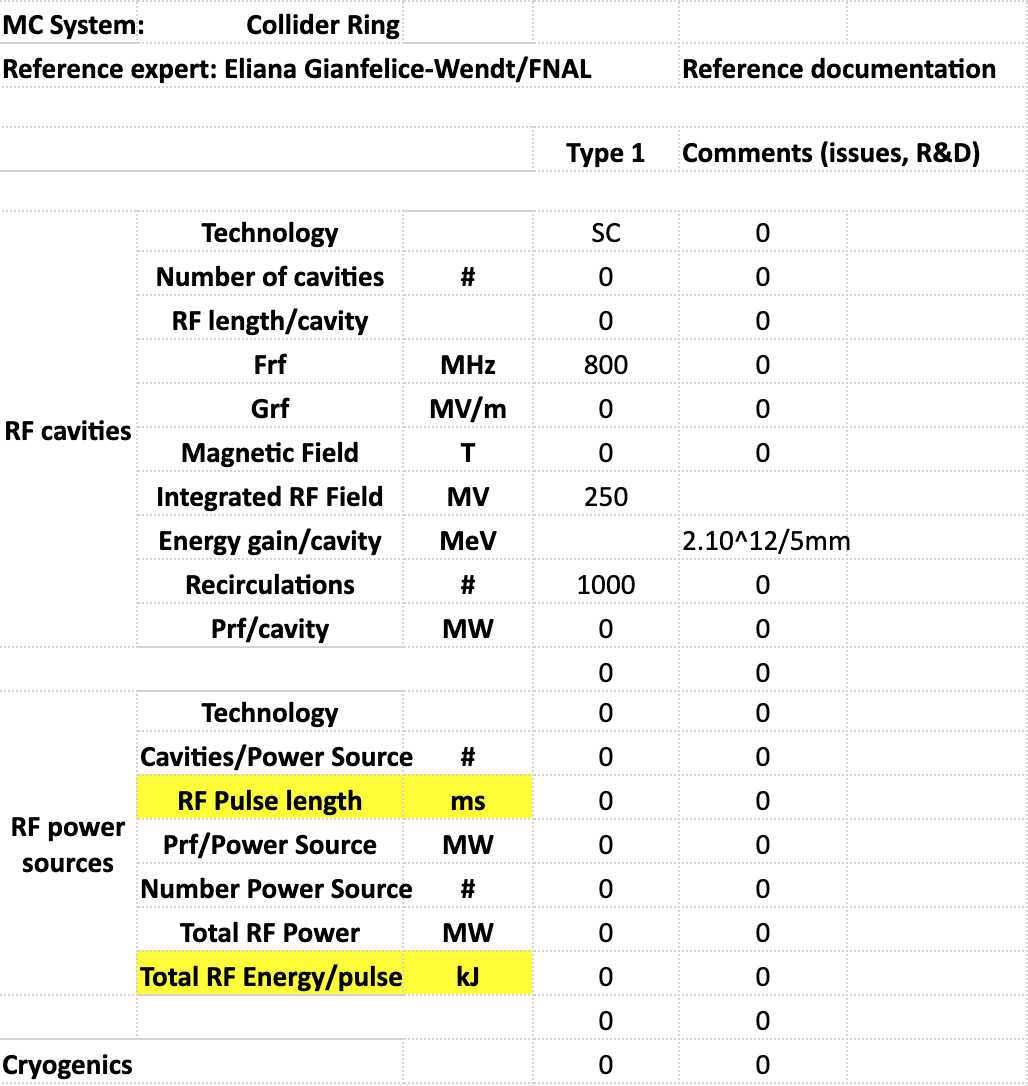
- Main relevant beam parameters.
- Website with impedance models for the RCS and Collider (CERN login required): muc-impedance.docs.cern.ch
OTHER REFERENCES:
- MAP on Internet Archive (archived list of documents).
- Unit conversion for longitudinal emittances (Fabian Batsch, April 2022).
- Letter of interest for Snowmass (H. Bartosik and G. Rumolo, 2020) => To see which types of beams (and associated beam powers) are available at CERN.
- Accelerator Physics of Colliders (Revised August 2019 by M.J. Syphers and F. Zimmermann).
- "Numerical Study of Collective Effects for Muon Beams" by D. Huang et al. (2009).
- "Collective Effects in High-Energy Muon Colliders" by E. Keil (2000).
- "Control of Longitudinal Collective Behavior in the Muon Collider Rings" by W.H. Cheng et al. (1997).
- "Beam Stability Issues in a Quasi-Isochronous Muon Collider" by K.Y. Ng (1996).
- "Studies of Collective Instabilities in Muon Collider Rings" by W.H. Cheng et al. (1996).
- "Progress on the Design of a High Luminosity Mu+Mu- Collider" by R.B. Palmer et al. (1996).
- "Single Bunch Collective Effects In Muon Colliders by W.H Cheng et al. (1996).
